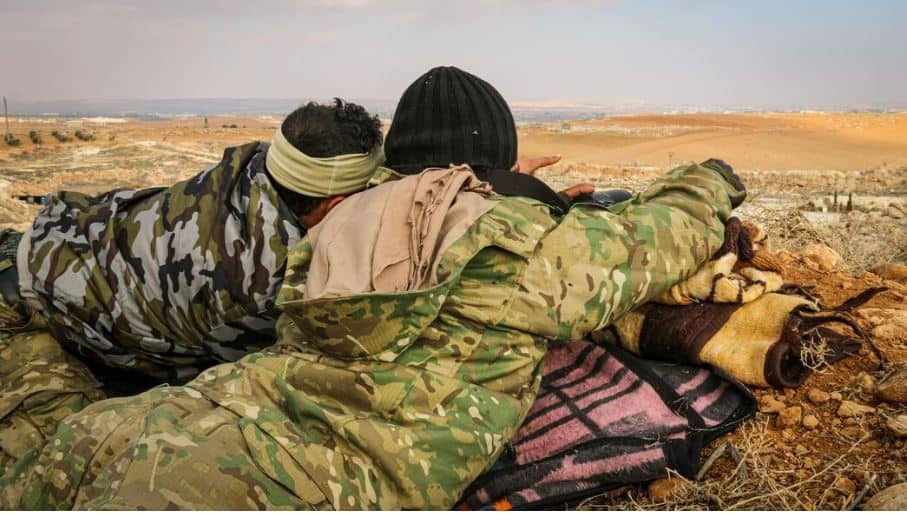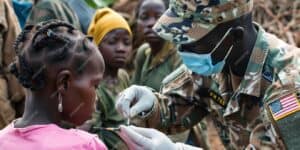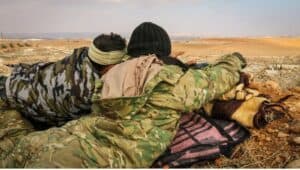
Sahel Conflict: Get the Latest Updates and Developments
The Sahel region’s heart includes Burkina Faso, Mali, and Niger. They are fighting a war on two fronts. Both al-Qaeda’s cell, JNIM, and the Islamic State Sahel Province join in.1
There’s been a rise in deaths from this conflict, both among civilians and politically involved people.
This has caused major concerns, especially in Mali and Burkina Faso.1 Sadly, the violence might not calm in these areas till 2024.

Key Takeaways
- The Sahel region is engulfed in a decade-long jihadist insurgency driven by JNIM and IS Sahel.
- Conflict fatalities and civilian deaths have surged across central Sahel in 2023.
- Mali and Burkina Faso are experiencing the highest levels of violence in the region.
- Counter-insurgency efforts are escalating to meet the insurgency’s increasingly aggressive tactics.
- The military juntas ruling the central Sahel states are shaping the region’s security policies.
The Escalating Crisis in the Central Sahel
The countries of Burkina Faso, Mali, and Niger in central Sahel are facing a long battle. This fight is against local jihadists linked to al-Qaeda and the Islamic State.
This decade-long conflict has taken a serious turn. The number of people dying from war has jumped by a lot.
Central Sahel saw a 38% increase in conflict-related deaths and more than an 18% rise in civilian casualties1.
Mali and Burkina Faso are now dealing with very high violence levels. These dangerous conditions are expected to remain through 2024 because both sides keep fighting harder.
Burkina Faso: A Nation Engulfed in Violence
In Burkina Faso, 2023 was especially tragic with over 8,000 people losing their lives in a widespread conflict.
This event almost looked like a civil war country-wide1. The army’s attempts to control the situation largely failed.
There were many terrible acts committed by different groups, including the security forces and armed militias.
The city of Djibo in Burkina Faso’s north was a main battleground. It saw fierce battles between the military and militias fighting to defend their homes.
People’s safety was at constant risk because of this fighting.
Mali: Shifting Conflict Dynamics and Russian Involvement
In Mali, a different story unfolded. An offensive by Malian forces and Russian-linked groups pushed violence north.
This action led to a rise in conflicts with rebel groups. These rebels, mainly Tuareg and Arab fighters, aimed to break free from Mali1. With help from Russian mercenaries, the Malian army made some gains.
Yet, their involvement in violence surged in 2023, leading to many more civilian deaths and destruction.
They were part of attacks that caused people to leave their homes in large numbers. These events were especially devastating for the local population.
Niger: A New Front in the Insurgency
Niger faced its own troubles when a military junta took over in July 2023. Before this change, Niger had started to see a bit of improvement in its safety.
However, after the power shift, the security situation worsened1. IS Sahel, the branch of the Islamic State in the area, has now made Niger a primary target.
As a result, more and more people, both civilians and soldiers, are getting hurt. Nigerien forces are pushing back hard, even crossing into Mali to fight IS Sahel1.
They are working to keep their country safe from further harm.
Humanitarian Crisis and Displacement
In Burkina Faso and Mali, the violence has made life very hard for regular people. Many have had to leave their homes to stay safe.
The situation is constantly changing, making it hard for people to live their ordinary lives.
Because of the fighting, many have fled to neighboring countries like Algeria. Others are preparing to leave their homes as they see no end to this crisis.
The need for help is growing every day.
| Refugee and Displacement Statistics in the Sahel |
|---|
| Refugees and asylum-seekers (Burkina Faso, Mali, Mauritania, Niger): 708,0002 |
| IDPs (Burkina Faso, Mali, Niger): 3,859,4002 |
| Refugee and IDP returnees (Burkina Faso, Mali, Niger): 110,8002 |
| Stateless individuals (Mauritania): 1,0002 |
| Others of concern (Niger): 42,0002 |
In Burkina Faso, almost two million people have had to leave everything behind since 2018 due to the fighting.
The UNHCR is working hard to make sure these people have safe places to live. In Niger, they’re working to register everyone who has left their homes and to support their needs.
Burkina Faso and Mali have seen many people head to Europe for safety. The UNHCR is giving support to these communities to help them stay safe wherever they are.
Their work is all about making sure people find security and peace.
Sahel Conflict: Updates and Developments
The Rise of Military Juntas and Foreign Involvement
The military juntas now control Burkina Faso, Mali, and Niger. Their power is shaping the region’s security choices for 2024.
With the Sahel region changing, French troops have left, UN’s Mali peace mission ended, and Russian mercenaries are there to stay.3
These leaders lean towards using more force to fight insurgency. In places like Burkina Faso and Mali, they say they will match rebel violence with military might.
Jihadist Insurgency: The Central Threat
The fight against jihadists is what stands out in the Sahel crisis. This battle is the main reason for the area’s danger.
There’s been a big jump in attacks against Dogon and Dozo hunter groups by JNIM. The number of deaths of Dan Na Ambassagou members and other Dozo fighters is three times higher than 2022.1
There’s also violence between Dozo groups and Fulani in Macina. This could change how violence in the region develops in 2024.
More air and drone strikes mean militant groups use even more aggressive tactics.
The Wagner Group’s Expanding Influence
The Wagner Group, under a new name ‘Africa Corps’, is gaining ground. It’s also gaining more success in Mali. With that, Russia is stepping up its efforts in the Sahel.
Now there’s talk of the group expanding its reach into Burkina Faso and Niger too.1 Signs show Russia may be planning a military base in Burkina Faso.
But, in Niger, the junta leaders are not all in agreement. In Mali’s north, the presence of FAMa and Wagner troops, and Russian mercenaries, has made the conflict worse.
This has led to many cruel acts, done in partnership with Malian forces.
Conclusion: Sahel Conflict: Get the Latest Updates and Developments
Violent extremist groups in the Sahel are becoming more powerful. This is bad news for safety and money in the US and Europe.4
In 2023, over 12,000 mostly civilian lives were lost. Additionally, more than 3 million had to leave their homes. In Burkina Faso, this number was over 2.1 million alone.4
The extremist groups, like JNIM, ISGS, and ISWAP, grew stronger. They did this because international help against them got weaker.
They attack both the government and the people in the area.5 In 2022, violence in the Sahel got worse, killing more people.
Over three million individuals in Burkina Faso, Mali, and Niger fled their homes because of this.
The Wagner Group, a non-state actor, took the chance to grow. They did this when foreign countries stopped helping so much.4
Since December 2021, the Malian Armed Forces and their friends might have done some very bad things. These include possible war crimes.
Also, using airplanes to fight against the militants has caused more harm to innocent people.4 When MINUSMA left, the situation got even worse.
Now, there’s not enough help to protect human rights and the people there.
There’s a risk that the terrorists and criminals will start working together more. This could bring even greater danger to the Sahel and other places.5
The Sahel countries spent a lot on safety in 2022. Their spending was equal to 3.9% of what they earned before any help.
And 25% of their resources went to security. But at the same time, they borrowed a lot of money. This borrowing has been going up since 2011 and is expected to keep going up in 2023.5
The help these countries get has been going down for the past ten years. In 2022, less than half a percent of what they earn was used to support their own budget.
This shows that better management, better local laws, and more money from other countries are really needed to solve the many problems the Sahel faces.
Related read: reports-on-conflicts-in-congo-stay-updated
Source Links
- https://acleddata.com/conflict-watchlist-2024/sahel/
- https://reporting.unhcr.org/operational/situations/sahel-situation
- https://www.cfr.org/global-conflict-tracker/conflict/violent-extremism-sahel
- https://www.globalr2p.org/countries/mali/
- https://www.imf.org/en/News/Articles/2023/11/16/cf-the-sahel-car-face-complex-challenges-to-sustainable-development





